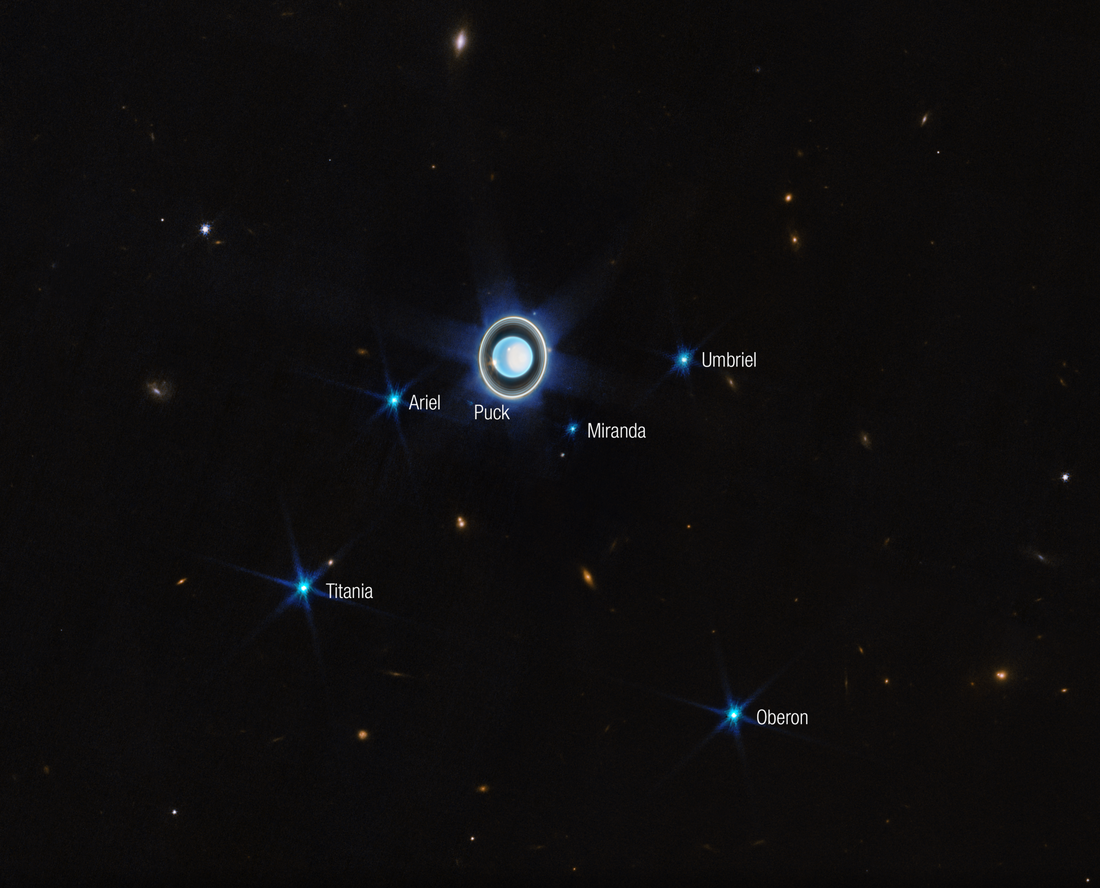
Findings Suggest Uranus Surrounded By Wet Worlds
Share
NASA's recent study suggests that some of Uranus' moons may harbour deep oceans beneath their icy exteriors. Titania and Oberon, in particular, could potentially sustain life due to the presence of relatively warm water. By reanalysing data from Voyager 2's 1986 mission using advanced computer modelling, scientists identified four of Uranus' moons—Ariel, Umbriel, Titania, and Oberon—as likely having extensive, salty oceans. These findings, published in the Journal of Geophysical Research, contribute to the growing catalogue of water worlds found within our solar system.

New NASA research suggests four of Uranus’ largest moons, some named for Shakespeare characters, likely contain an ocean layer between their cores and icy crusts.
The study challenges the belief that moons of sizes ranging from 700 to 1,000 miles wide lack the necessary heat to maintain an ocean layer. Julie Castillo-Rogez, the lead author from NASA's Jet Propulsion Laboratory, notes that the new computer models draw insights from previous missions that uncovered ocean worlds within our solar system, such as Enceladus (a moon of Saturn) and Ceres (a dwarf planet). These discoveries indicate that oceans can exist in unexpected places among small celestial bodies, highlighting the presence of mechanisms not yet fully comprehended by planetary scientists.

The 2023 Planetary Science and Astrobiology Decadal Survey has prioritized the exploration of Uranus and its moons, shaping future space missions. The James Webb Space Telescope has also recently captured an image of 11 rings around Uranus. These developments have prompted NASA to intensify efforts in understanding the tilted ice giant, located approximately 2 billion miles from Earth. Uranus's common size in the cosmos and its unique characteristics make it an ideal subject for scientific research. Despite observations from ground-based telescopes, the limited data from a close encounter with Uranus leaves many questions unanswered. Notably, scientists are intrigued by the planet's distinctive feature of having its equator nearly perpendicular to its orbit, resulting in extreme seasons.
You’ve come this far…
Why not venture a little further into A.S.S. - our exclusive Australian Space Society.
And keep thrusting Australia into the deep unknown…
#Space_Aus




